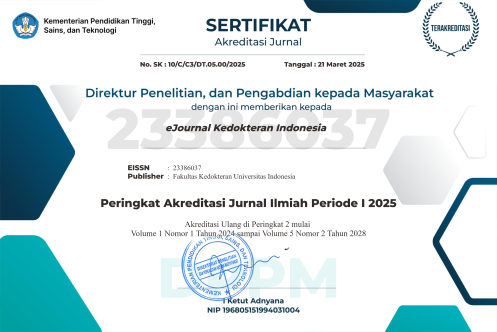Characteristics and Management Outcome of Vaginismus
DOI:
https://doi.org/10.23886/ejki.12.843.137Keywords:
Sexual, Dysfunction, Genitopelvic, Pain, VaginismusAbstract
Vaginismus, a common pelvic floor dysfunction characterized by involuntary vaginal muscle spasms, often impedes sexual intercourse and is exacerbated by cultural barriers in Indonesia, where sexual issues are taboo. Healthcare providers' lack of knowledge contributes to patient dissatisfaction with treatments. This study aimed to evaluate risk factors and management outcomes in 36 Indonesian women with vaginismus. Primary data, including demographic details, vaginismus history, severity, and FSFI-6 scores, were collected through interviews and medical records. Results showed that 94.4% of participants were under 40 years old, 66.7% had been married for over two years, and 94.5% were university graduates. Most had normal BMI and no significant illness history. Among them, 77.8% had no history of penetration, with the majority having no medical, social, or psychological risk factor yet reporting good sexual satisfaction. Self-dilation was the primary treatment, with a 29.41% success rate in achieving penetration. Younger age and higher education were notable characteristics among cases, suggesting a need for increased disease awareness. The study highlights that while traditional risk factors were not predominant, self-dilation therapy yielded moderate success, and patient satisfaction with sexual and interpersonal relationships remained high.
Downloads
Downloads
Published
How to Cite
Issue
Section
License
Copyright (c) 2024 Gita Nurul Hidayah, Alfa Putri Meutia, Muhammad Syah Nadir Chan, Fernandi Moegni, Kevin Sebastian, Lubna Djafar, Budi Iman Santoso

This work is licensed under a Creative Commons Attribution-NonCommercial 4.0 International License.
Accepted 2024-08-26
Published 2024-09-25



